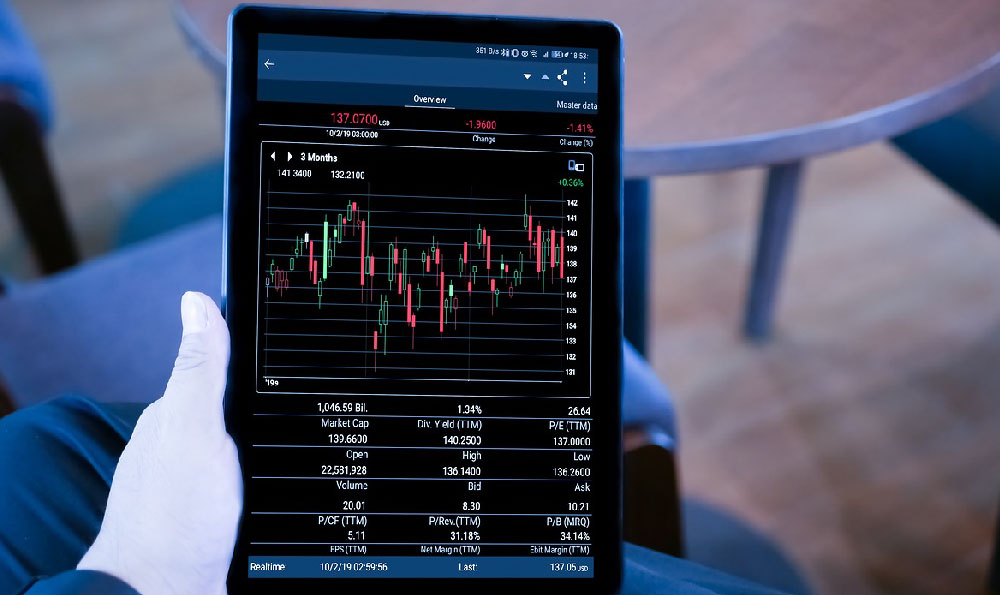Cryptocurrency earnings have captivated the attention of investors worldwide, promising potentially high returns but also demanding a keen understanding of the market's intricacies. The landscape is rapidly evolving, presenting a diverse array of methods and opportunities for those seeking to generate wealth through digital assets. Navigating this terrain requires a combination of technical knowledge, risk assessment skills, and a long-term perspective.
One of the most prevalent methods for earning cryptocurrency is through trading. This involves buying and selling cryptocurrencies on exchanges with the aim of profiting from price fluctuations. Traders employ various strategies, ranging from day trading, which seeks to capitalize on short-term price swings, to swing trading, which aims to capture gains over several days or weeks. Technical analysis plays a crucial role in trading, involving the study of price charts, volume, and other indicators to identify patterns and predict future price movements. Fundamental analysis, on the other hand, involves assessing the underlying value of a cryptocurrency by examining its technology, adoption rate, team, and market capitalization. Successful trading requires discipline, emotional control, and a well-defined risk management strategy to mitigate potential losses.
Another popular avenue for earning cryptocurrency is staking. Staking involves holding cryptocurrencies in a digital wallet to support the operations of a blockchain network. In return for their contribution, stakers receive rewards in the form of additional cryptocurrency. This method is particularly appealing to investors seeking passive income, as it allows them to earn rewards without actively trading. Proof-of-Stake (PoS) blockchains, such as Ethereum 2.0 and Cardano, rely heavily on staking to validate transactions and secure the network. The amount of rewards earned through staking typically depends on the amount of cryptocurrency staked and the duration of the staking period. However, it's important to consider factors like lock-up periods and potential slashing risks, where stakers can lose a portion of their stake if they behave maliciously or their node malfunctions.

Yield farming has emerged as a more complex and potentially lucrative method for earning cryptocurrency. It involves lending or borrowing cryptocurrencies on decentralized finance (DeFi) platforms in exchange for rewards. Users provide liquidity to these platforms by depositing their cryptocurrencies into liquidity pools, enabling others to borrow or trade them. In return for providing liquidity, users receive a portion of the transaction fees and governance tokens. Yield farming can be highly profitable, but it also comes with significant risks, including impermanent loss, smart contract vulnerabilities, and rug pulls. Impermanent loss occurs when the value of the deposited cryptocurrencies changes relative to each other, resulting in a loss compared to simply holding the assets. Smart contract vulnerabilities can be exploited by hackers, leading to the loss of funds. Rug pulls involve developers abandoning a project and running away with investors' funds. Therefore, thorough research and due diligence are essential before participating in yield farming activities.
Mining represents a more resource-intensive method for earning cryptocurrency. It involves using powerful computers to solve complex mathematical problems to validate transactions on a blockchain network. Miners are rewarded with newly minted cryptocurrencies for their efforts. Mining is typically associated with Proof-of-Work (PoW) blockchains, such as Bitcoin. However, it requires significant investment in hardware, electricity, and cooling systems. The profitability of mining depends on factors like the difficulty of the mining algorithm, the price of the cryptocurrency being mined, and the cost of electricity. As mining difficulty increases, it becomes more challenging to earn rewards, and only those with access to cheap electricity and advanced hardware can remain competitive. Furthermore, environmental concerns surrounding the energy consumption of mining have led to increased scrutiny and calls for more sustainable alternatives.
Beyond these primary methods, other opportunities exist for earning cryptocurrency, such as participating in airdrops, bounty programs, and affiliate marketing. Airdrops involve distributing free cryptocurrency tokens to users who meet specific criteria, such as holding a certain amount of a particular cryptocurrency or following a project on social media. Bounty programs reward users for completing tasks, such as testing software, creating content, or referring new users. Affiliate marketing involves promoting cryptocurrency-related products or services and earning commissions on sales generated through referral links. These methods can provide additional avenues for earning cryptocurrency, but they often require significant time and effort to be successful.
When venturing into the world of cryptocurrency earnings, it is crucial to prioritize risk management and security. Never invest more than you can afford to lose, and diversify your portfolio across different cryptocurrencies and investment strategies. Research thoroughly before investing in any project, and be wary of scams and fraudulent schemes. Use strong passwords and enable two-factor authentication to protect your cryptocurrency wallets. Consider using hardware wallets to store your cryptocurrencies offline, providing an extra layer of security against hacking. Stay informed about the latest developments in the cryptocurrency market, and adapt your strategies accordingly. The cryptocurrency market is highly volatile, and prices can fluctuate dramatically. It is essential to remain calm and rational, and avoid making impulsive decisions based on fear or greed. By adopting a disciplined and informed approach, you can increase your chances of achieving your financial goals in the cryptocurrency space while minimizing your risk. The landscape is constantly evolving, so continuous learning and adaptation are paramount to long-term success. Remember, the potential rewards are substantial, but they come with inherent risks that must be carefully managed.












